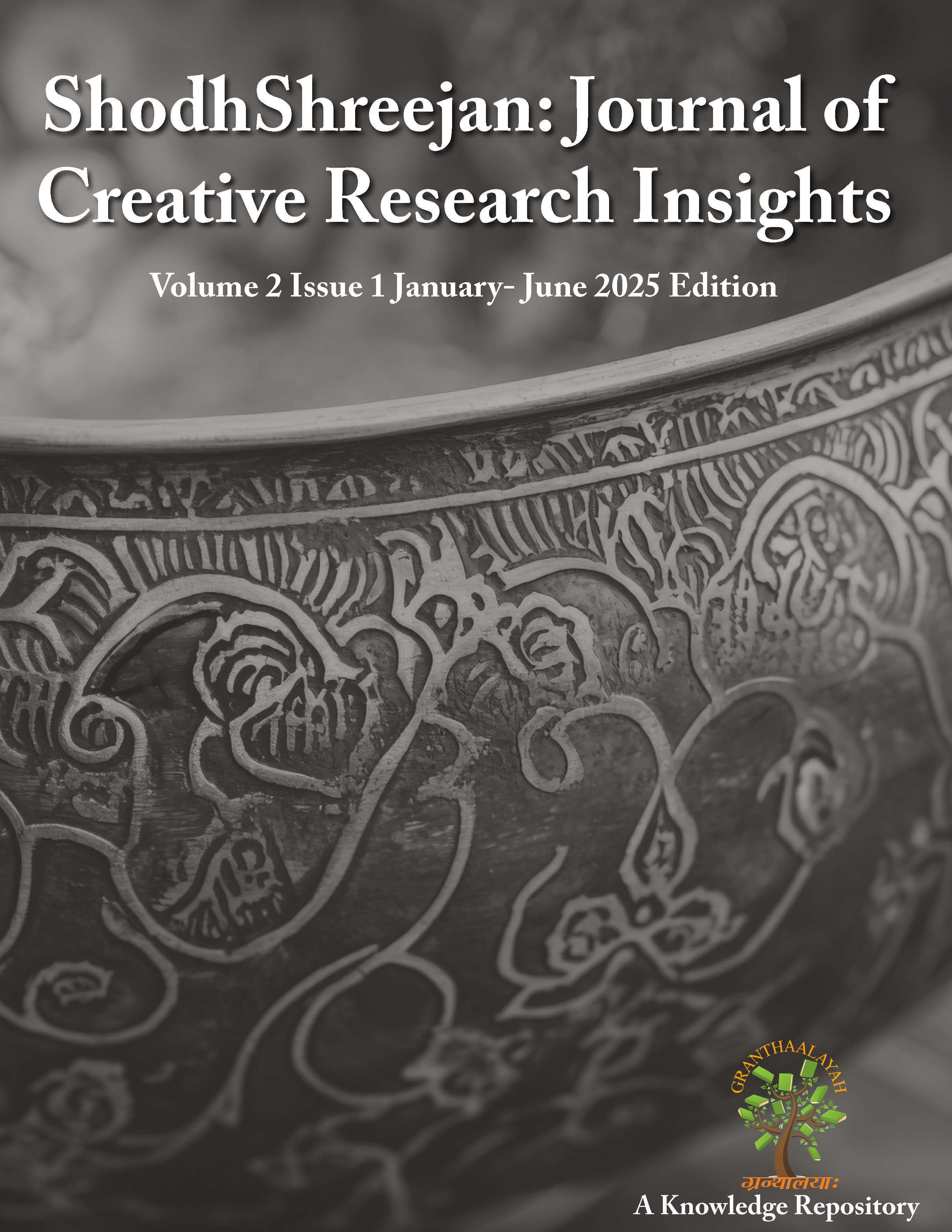REFRAMING SPACE: EXPLORING VIDEO INSTALLATION AS PEDAGOGY IN DESIGN EDUCATION
DOI:
https://doi.org/10.29121/shodhshreejan.v2.i1.2025.25Keywords:
Video Installation, Spatial Media, Design Pedagogy, Design Foundation Studies, Immersive Learning, Media ArtAbstract [English]
This study deals with the pedagogical potential of video installation as a medium for spatial
inquiry in a foundation-level design education program. Within the post-pandemic environment, where the way we consume online content has altered our view of video and space, this research brings video installation as a new experiential way of learning. Through a site-specific Installation workshop with Design Foundation students, the study considers the integration of moving images as a medium to develop a form in a specific space using time to build the narrative and develop perception. The theories used are those of media art, expanded cinema, and spatial forms and aesthetics, based on qualitative observations, student reflections. The findings underline the video installation as an excellent arena for transdisciplinary learning, encouraging critical thinking, spatial consciousness, and creative risk-taking in young designers. This paper contributes to the discussion on new media pedagogy and proposes a model for introducing immersive, media-based approaches in initial design education.
References
Bishop, C. (2005). Installation Art: A Critical History. Tate.
Bruno, G. (2002). Atlas of Emotion: Journeys in Art, Architecture, and Film. Verso.
Dewey, J. (1934). Art as Experience. Minton, Balch & Co.
Dixon, S. (2007). Digital Performance: A History of New Media in Theater, Dance, Performance Art, and Installation. MIT Press. https://doi.org/10.7551/mitpress/2429.001.0001
Elwes, C. (2005). Video Art: A Guided Tour. I.B. Tauris.
Hayles, N. K. (2012). How We Think: Digital Media and Contemporary Technogenesis. University of Chicago Press. https://doi.org/10.7208/chicago/9780226321370.001.0001
Ibrahim, A., & Evans, A. (2020). Interdisciplinary Learning Through Installation Art in Design Education. International Journal of Art & Design Education, 39(1), 49–64.
Ibrahim, G., & Evans, M. (2020). Teaching Art Through Installation: Embodied Pedagogy in Design Education. International Journal of Art & Design Education, 39(1), 35–50. (Note: Volume & Page Info Inferred; Adjust If Different)
Irwin, R., & O'Donoghue, D. (2012). Encountering Pedagogy Through Art. Studies in Art Education, 53(4), 287–297. https://doi.org/10.1111/j.1476-8070.2012.01760.x
Kolarevic, B. (2008). Performative Architecture: Beyond Instrumentality. Routledge.
Kolko, J. (2010). Abductive Thinking and Sensemaking: The Drivers of Design Synthesis. Design Issues, 26(1), 15–28. https://doi.org/10.1162/desi.2010.26.1.15
Koss, J. (2010). On the Limits of Video Installation: Spatiality and the Body. Art Bulletin, 92(3), 228–245.
Marks, L. U. (2000). The Skin of the Film: Intercultural Cinema, Embodiment, and the Senses. Duke University Press. https://doi.org/10.1215/9780822381372
McQuire, S. (2008). The Media City: Media, Architecture and Urban Space. Sage. https://doi.org/10.4135/9781446269572
Meigh-Andrews, C. (2006). A History of Video Art. Berg. https://doi.org/10.5040/9781350284777
Meigh-Andrews, C. (2006). A History of Video Art. Bloomsbury. https://doi.org/10.5040/9781350284777
Mondloch, K. (2010). Screens: Viewing Media Installation Art. University of Minnesota Press. https://doi.org/10.5749/minnesota/9780816665211.001.0001
Oxman, R. (2006). Theory and Design in the First Digital Age. Design Studies, 27(3), 229–265. https://doi.org/10.1016/j.destud.2005.11.002
Tavin, K. (2005). Hauntological Shifts: Video Installation and Art Education. Studies in Art Education, 47(2), 135–149. (Note: Volume & page Info Inferred)
Youngblood, G. (1970). Expanded Cinema. E.P. Dutton.
Published
Issue
Section
License
Copyright (c) 2025 Dr. Suman Pandey, Dr. Ritesh Kuman

This work is licensed under a Creative Commons Attribution 4.0 International License.
With the licence CC-BY, authors retain the copyright, allowing anyone to download, reuse, re-print, modify, distribute, and/or copy their contribution. The work must be properly attributed to its author.
It is not necessary to ask for further permission from the author or journal board.
This journal provides immediate open access to its content on the principle that making research freely available to the public supports a greater global exchange of knowledge.



















